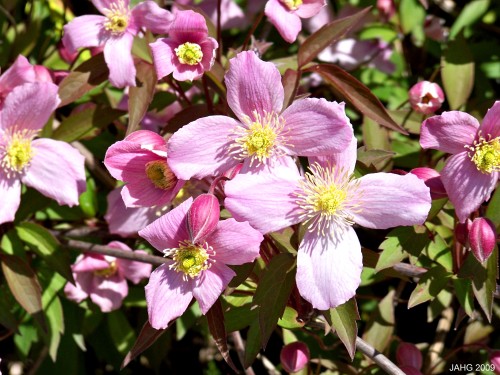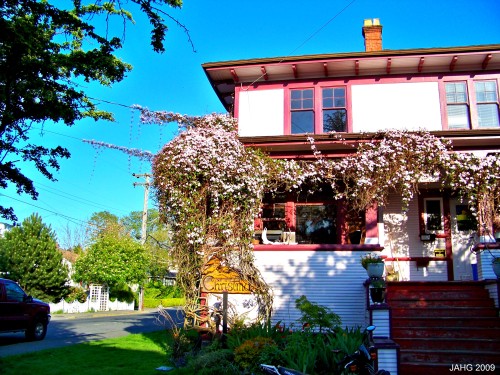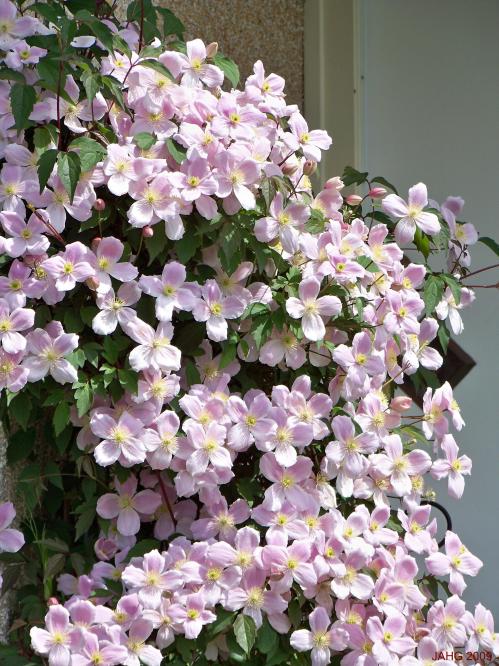When I was small we would go for walks with our mother in the neighborhood and stop and look at the gardens, some were interesting others where more playful and some just a plain messy. You could tell the ones who liked kids by the plants they often chose, fun ones like squashes, scarlet runner beans, and bright flowers like Cosmos, Marigolds and who could not resist Nasturtiums! Nasturtiums(Tropaeolum majus) are a fond memory of many of us who had them in our garden when we where young.
Tropaeolum majus orginally is from South America, growing in an area from Bolivia and Columbia and is said to be found in areas such as central Chile as well. Nasturtiums were first brought to Europe by Spanish around 1500, it is likely seeds where carried back. In South America the plant was used for medicinal purposes such as treating coughs, colds, flu by creating at tea. Topically it was used in poultice for for cuts and burns. Nasturtiums are high in vitamin c and have natural antiboitics in them. It was in Europe that the plant was first used for culinary purposes.

Here the trailing variety of Nasturtium is used as a simple but charming ground cover that is a riot of color during summer and autumn.
As a culinary plant Nasturtiums have a lot to offer: the leaves, flowers, stems and buds can all be used and impart a spicy sweet flavor reminiscent of Garden Cress (Lepidium savaticum) or Water Cress(Tropaeolum officinale). The flowers and leaves are used in many ways from salads to sandwiches, in dressings and spreads. The flower buds are pickled and used as a substitute for capers. I like to use the stems as they are especially spicy and add them into salads, my dad who loved extra spicy things was surprised with the intensity of heat in them.

Nasturtium leaves are unusual as the stem is attached to the very middle of the leaf giving it a curious round shape which is part of this plants charm.
The unusual shape of the leaves and flowers lead Linnaeus to choose a an interesting botanical Latin name for Tropaeolum majus. ‘Trope’ is from the Greek tropaion or trophy which refers to how the round shields(leaves) and helmets(flowers) where hung on a pillar which was said to be a sign of victory on a battlefield. The common name Nasturium comes from the latin ‘nastos’ (nose) and ‘turtum’ (torment) and this refers to the spicy taste of the plant. Majus just means big which refers to the size of the leaves.

The stained glass coloring of the Nasturtium flowers and the curious rounded leaves have inspired for many famous artists and writers.
Nasturtiums have long been known but during the Victorian era, into the early 20th century seemed most charmed by these plants. From Monet, William Morris, Moorcroft(pottery) to Tiffany’s famous glass, the plants where used everywhere as a charming and attractive subject. Nasturtiums of course are a famous subject for botanical prints. Who does not love a bouquet of the fragrant brightly colored Nasturtiums on a table or windowsill to cheer one up.
Tropaeolum majus is an easy plant to grow for the new or junior gardener. The seeds are big and easily handled and once planted germinate and grow quickly. They are not fussy and like sandy light, poorer soils, but will do equally well in richer soils although it will produce more leaves and less flowers. Full sun is most important to get the best showing of flowers unless you are in a very hot climate where a little shade in the afternoon will be appreciated. although they are somewhat drought tolerant regular watering will insure your plants continue to bloom for a long time. dead-heading the spent blossoms will help the plant to continue to bloom for months. Nasturtiums are considered to be hardy annuals and can tolerate a light frost, a hard one will kill them outright.
There are 2 main forms of Nasturtiums, the compact(or dwarf) and the trailing. The dwarf are at the most 45cm(18in) wide and tall with the trailing form being able to cover a 1m(3ft) space per plant. The beguiling flowers come in a vast tapestry of single-colors, bi-colors and blends ranging from the blackish-red ‘Mahogany’ to a pale buttery yellow and all ranges from red through scarlet, orange and yellows. Many named color varieties, singles, doubles and variegated(‘Alaska’) and dark leaved(‘Empress of India’) forms can be found in seed strains and are cheap to buy. Seed is easily saved for next year and often will reseed and grow in the same spot for many years.
Tropaeolum majus can be used in the garden in so many ways: edging, colorful filler for early bulbs and bloomers, childrens’ first garden, ground-cover, edible garden, fragrant garden, self seeding garden, old fashioned gardens, window boxes and containers, formal and informal settings and as artists subjects and fairy gardens.
Trailing and Twinning with Tropaeolums:
What is the reationship with the Cresses: http://www.uni-graz.at/~katzer/engl/Lepi_sat.html
Nasturtiums as garden vegetables: http://www.veraveg.org/Veg%20History/Veg%20History%20Nasturtium.html
Look at all the art from these plants: http://www.google.ca/images?hl=en&q=Nasturtiums%20in%20art&um=1&ie=UTF-8&source=og&sa=N&tab=wi&biw=1309&bih=741
Will you be following on this path?
















































 Stumble It!
Stumble It!






